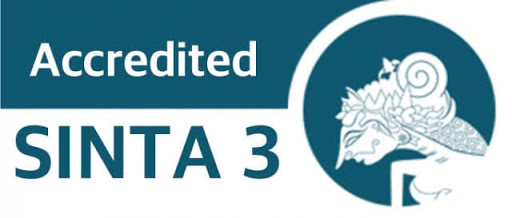MATHEMATICAL THINKING PROCESS IN GRAPH THEORY MATERIAL IN TERMS OF STUDENT LEARNING STYLES
Abstract
This research is motivated by the lack of understanding students have in working on graph theory material problems due to differences in students' thinking processes, and student learning styles when studying discrete mathematics, which requires different thinking with Boolean algebra material. Each student has a different way of thinking skills and learning style. This study uses descriptive qualitative methods so that this study has the objective to find out how the students' mathematical thinking processes in working on graph theory material problems and what obstacles are experienced by students in terms of their learning styles. The focus of research in this study, namely to analyze mathematical thinking processes on graph theory material in terms of student learning styles. The instruments in this study were researchers and also graph theory test questions that were used to view students' thought processes. The research subjects were 5 semester students, as many as 3 people with visual, auditory and kinesnetik learning styles. Then given the problem of graph theory as much as 2 questions, one question in the form of text and another in the form of images. The results show that students with visual learning styles tend to be included in students who have a conceptual thinking process, students with auditory learning styles tend to be included in students who have semi-conceptual thinking processes, while students with kinesthetic learning styles, including students who have computational thinking process . Barriers experienced by students include the lack of understanding of the basic concepts of graph theory and the trajectories and trajectories of Euler and Hamilton.
Keywords
Full Text:
PDF (Bahasa Indonesia)References
De Porter & Hernacki. (2002). Membiasakan Belajar Nyaman dan Menyenangkan. Jakarta. Kaifa
Kuswana. (2011). Taksonomi Berpikir. Bandung: Rosda Karya
Moleong, L. (2011). Metodologi Penelitian Kualitatif. Bandung: Remaja Rosdakarya.
Sugiyono. (2017). Metode Penelitian Kuantitatif, Kualitatif dan R&B. Bandung: Alphabeta.
Yanti, A., & Syazali, M. (2016). Analisis Proses Berpikir Siswa dalam Memecahkan Masalah Berdasarkan Langkah-langkah Brainsford dan Stein ditinjau dari Adversity Quotient. Al-Jabar. Jurnal Pendidikan Matematika, 7(1 ), 63-74.
DOI: http://dx.doi.org/10.33578/pjr.v4i5.8081
Refbacks
- There are currently no refbacks.
Copyright (c) 2020 JURNAL PAJAR (Pendidikan dan Pengajaran)

This work is licensed under a Creative Commons Attribution-NonCommercial-ShareAlike 4.0 International License.
JURNAL PAJAR (Pendidikan dan Pengajaran)
Secretariat
Program Studi Pendidikan Guru Sekolah Dasar
Gedung B1, FKIP Universitas Riau
Kampus Bina Widya Km. 12,5 Simpang Baru Panam
Pekanbaru Riau Indonesia 28293
e-mail : pajar@ejournal.unri.ac.id



